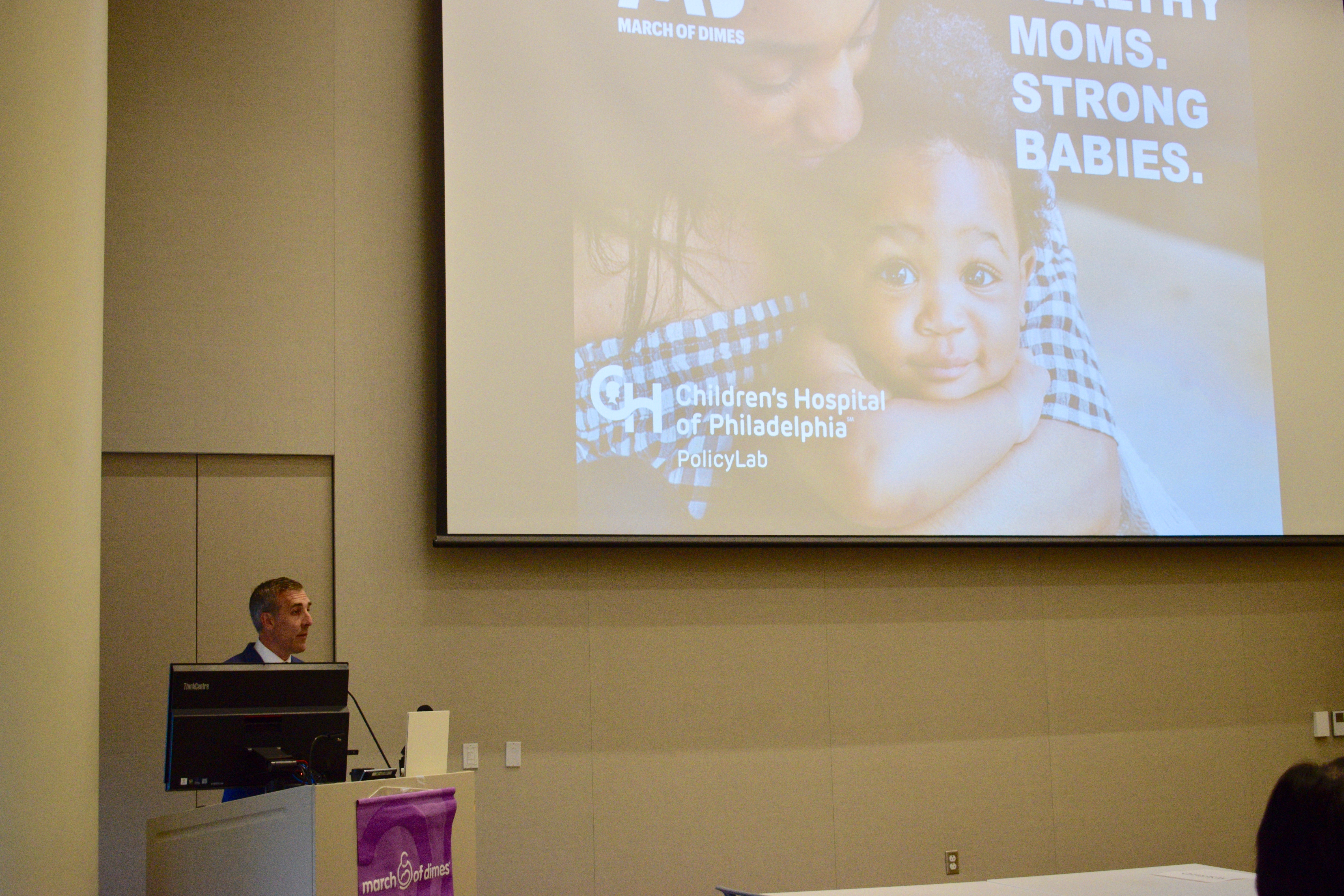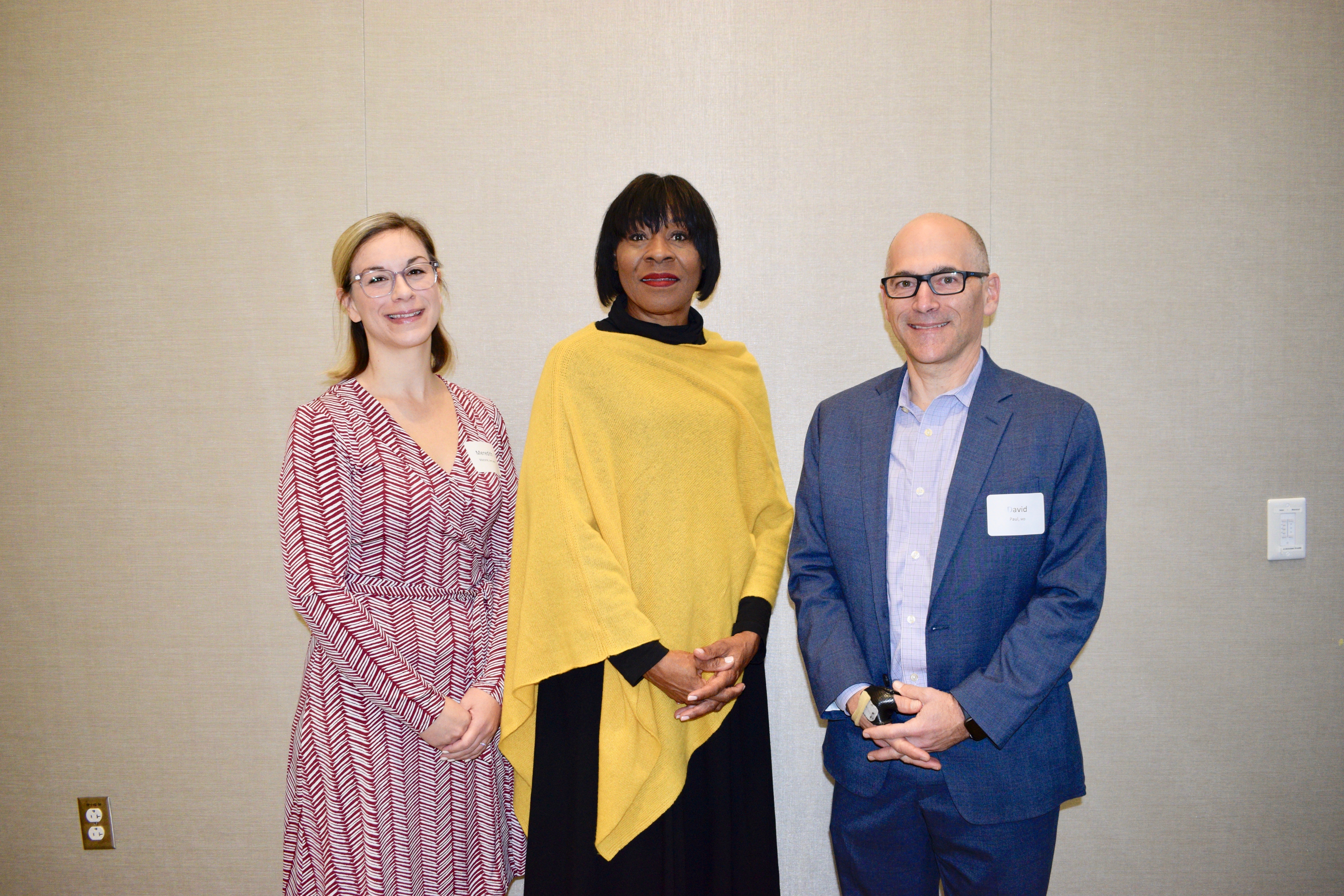Achieving Equity in Birth Outcomes: We Are Stronger Together

At PolicyLab, we understand that partnerships are key in ensuring our research contributes meaningful information and solutions to address pressing public health problems in our communities. Therefore, we know that our work assessing strategies to reduce disparities in infant mortality in our state, for example, requires a multi-partner and multi-pronged approach.
Over the past 18 months, I have been part of a team, led by Dr. Meredith Matone, that partnered with the Pennsylvania March of Dimes and the Pennsylvania Department of Health Bureau of Family Health Title V Program to better estimate the number of women at highest risk for preterm birth in the Commonwealth and the number of women accessing clinical treatment to reduce the likelihood of this adverse outcome. From there, we conducted interviews with pregnant mothers and obstetric providers at two academic medical centers in Philadelphia to explore what factors support—and hinder—access to available treatment for preterm birth prevention.
While we are still analyzing the results of our research undertaken through this state-advocacy-academic partnership, we’ve been working with our partners to keep this critical issue top of mind, and I wanted to report back on that to our readers.
Maternal-infant Mortality Disparities Persist in the United States
In the U.S., we have seen numerous medical advancements over the past few decades, yet continue to lag behind other countries when it comes to birth outcomes for moms and babies, especially for racial/ethnic minorities.
Black mothers are three to four more times more likely to die in childbirth than white mothers. Rates of preterm birth—a leading cause of neonatal and infant morbidity and mortality—among black mothers are two-fold compared to white mothers. Historically, maternal and infant mortality disparities have been persistent—in large part due to the interrelationship of clinical and social determinants of health underlying these outcomes. Even still, most pregnancy-related deaths are preventable, making it even more urgent to develop collaborative approaches to address this pervasive public health problem.
Three States Come Together to Close the Birth Outcomes Gap
This past November, PolicyLab and March of Dimes co-hosted an event to highlight innovative approaches happening regionally to address maternal-infant mortality disparities. Physicians, researchers and public health practitioners in the tri-state area convened to present on March of Dimes-supported efforts and generate a call to action for addressing maternal and newborn health.
Speakers presented on a variety of research and implementation projects, all with a common aim: understanding the contextual factors that shape access to care and resources for pregnant women and families. Examples of this work included:
- In Delaware: Dr. David Paul of Christina Care Health System described the wrap-around services provided to high-risk women in the Healthy Women, Healthy Baby Program
- In New Jersey: Dr. Judith Ruffin highlighted a partnership between New Jersey Department of Health and Family Health Initiatives to improve access and quality of maternal health care through community-based programs
- In Pennsylvania: Dr. Emily Gregory, my PolicyLab colleague, presented on her work exploring new ways to deliver maternal-infant preventive care in the postpartum period

Dr. Emily Gregory presenting at PolicyLab and March of Dimes' event in November 2019.
At the end, Pennsylvania Senator Vincent J. Hughes confirmed the importance of this work with a call to action that challenged us to tackle some of the pervasive, socioeconomically driven issues underlying birth outcome disparities, including community violence, poor environmental conditions and lack of well-paying jobs.
As an attendee, this reminder of the systemic issues at the root of maternal and infant health disparities was overwhelming. Can any thought leader, scientist or policymaker truly make an impact on their communities? On their own—a resounding no. It became immediately clear to me that, as we explore system change and meaningful solutions, we will need to bring together a diverse group of stakeholders, much like the make-up of the audience in the room.
We Are Stronger Together
So, while we came together to discuss the work we had accomplished as individuals and the work left to be done, the unquestionable takeaway of the day was: we are stronger together.
I heard it in opening remarks from Seth Hall, board chair for the March of Dimes Market of Eastern Pennsylvania, South Jersey and Delaware, “Individually, we are limited in what we can accomplish. Together, we can reduce the number of babies born preterm... the number of women who experience pregnancy-related health complications… and the number of women who die from pregnancy-related causes.”

Seth Hall providing his opening remarks.
I heard it from Melita Jordan, senior director of Community Health in the New Jersey Department of Health, who acknowledged the importance of partnership in tackling social determinants of health, and the reality that access to high-quality health care is less impactful when families are struggling to meet basic needs.

From left to right: Dr. Meredith Matone, Melita Jordan and Dr. David Paul
And I especially heard it during the closing discussion, when attendees brought their own voice to answer the question, “If you could do anything to close the racial disparities gap in maternal and newborn health, what would it be?” Some highlights included:
- Get out of the NICU and into the neighborhood—the importance of community voice in shaping interventions to address perinatal health outcomes
- Partner with stakeholders outside the hospital walls—for example, city planning departments, faith-based organizations and home visiting programs
- Address maternal health in the “fourth trimester”—when moms are in a state of transition with their newborn and may miss opportunities to address their own physical and mental health needs
Presenters and attendees highlighted that our way forward will require us to break down silos and reshape/expand the standard of care. I left re-committed to the PolicyLab value of partnered research, and look forward to sharing the results of our collaborative research with you soon.

